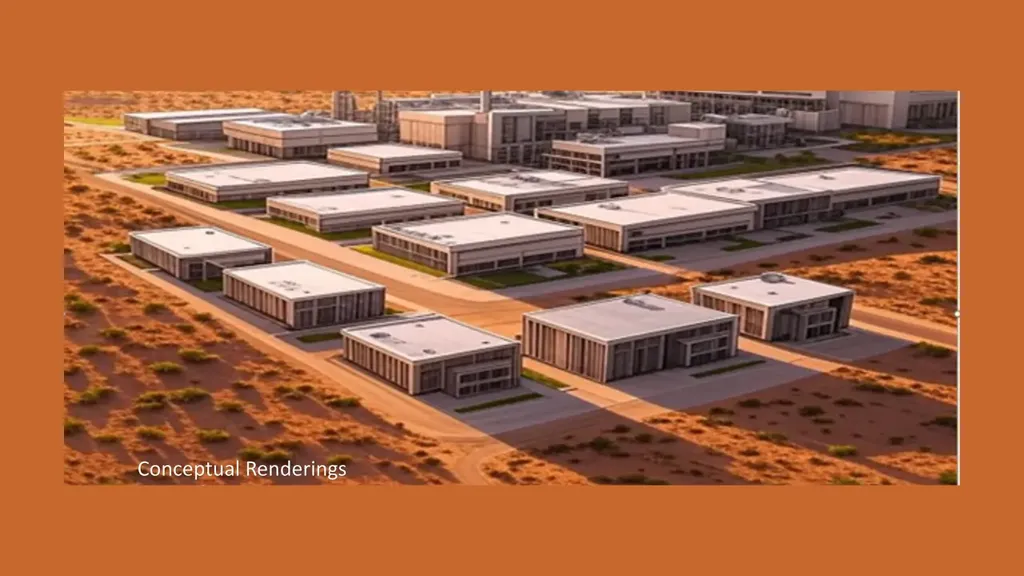The construction industry is on the cusp of a digital revolution, and Arizona is positioning itself as a frontrunner in this new era. Vermaland, LLC, a Phoenix-based land developer, has unveiled plans for a $33 billion data center industrial park—a project that could reshape the state’s economic and technological landscape. This ambitious development, spanning 3,300 acres, is designed to support up to 3 gigawatts of power capacity, potentially transforming the Phoenix-Tucson corridor into a major hub for technology investment, rivaling Northern Virginia’s famed “Data Center Alley.”
The announcement comes at a time when data center construction is surging across North America, with over 6.35 gigawatts of capacity under development as of late 2024, according to CBRE. Phoenix, in particular, has seen a remarkable 67% inventory growth in 2024, trailing only Atlanta among major markets. This rapid expansion underscores the growing demand for digital infrastructure, driven by the relentless march of artificial intelligence and cloud computing.
Kuldip (Ken) Verma, CEO of Vermaland, emphasized the strategic significance of this development. “This positions Arizona to capture a meaningful share of the AI infrastructure boom,” Verma stated. “With power costs significantly below California and growing tech company demand, we’re creating the next generation of digital infrastructure.” This bold vision aligns with broader industry trends, as tech giants like Meta plan to invest between $60 billion and $65 billion in 2025, primarily for AI and data center development. Additionally, the federal government’s $500 billion Stargate initiative aims to build 20 large AI data centers nationwide, further fueling the demand for cutting-edge digital infrastructure.
The site for this monumental project is strategically located within a federally designated Qualified Opportunity Zone in the Phoenix-Tucson corridor. This designation offers potential tax benefits for long-term capital investments, including up to a 15% reduction in capital gains taxes for investments held for 10 years or longer. Such incentives could attract significant investment, further bolstering the region’s economic growth.
Sustainability is at the heart of Vermaland’s vision. The development will incorporate a hybrid energy system that includes solar, natural gas, battery storage, and grid connectivity. Vermaland’s broader portfolio includes 16 solar farm sites totaling more than 10,000 acres, projected to generate over 2 gigawatts of clean energy—enough to power approximately 400,000 homes. This commitment to renewable energy underscores the growing importance of sustainability in the construction and technology sectors.
The economic impact of this project could be profound. In 2020, data centers in Arizona generated $539 million in economic output, supporting over 2,500 jobs in construction and operations. The industry contributed at least $85 million in state and local tax revenue, highlighting its role as a catalyst for economic development. With the new data center industrial park, Arizona could see a significant boost in job creation and economic activity, further solidifying its position as a leader in the digital economy.
However, the rapid expansion of data centers also raises important questions about sustainability and resource management. As the demand for digital infrastructure grows, so does the need for energy-efficient and environmentally responsible construction practices. The construction industry must navigate the delicate balance between technological advancement and environmental stewardship, ensuring that the pursuit of progress does not come at the expense of the planet.
The Vermaland project is a testament to the transformative power of construction in shaping the future of technology and sustainability. As the industry continues to evolve, projects like this will play a pivotal role in defining the next chapter of urban development, economic growth, and environmental responsibility. The stakes are high, but the potential rewards are even greater—a future where technology and sustainability coexist, driving innovation and progress for generations to come.

